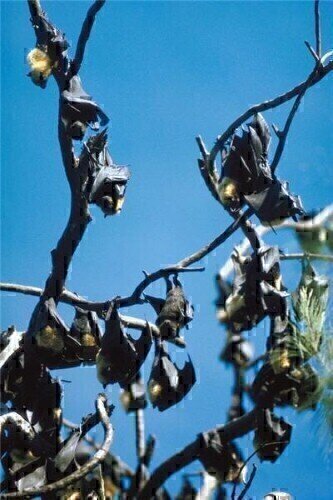-
 The virus could be passed to other animals by the bats and then passed to humans
The virus could be passed to other animals by the bats and then passed to humans
News
MERS virus found in Egyptian tomb bat
Aug 23 2013
The cause of the Middle East respiratory syndrome (MERS) may have been identified, according to scientists. Research has found that Saudi Arabian bats may be responsible for the coronavirus that has so far killed 47 people since it emerged in 2012.
Work has been ongoing since the first confirmed cases of MERS came to light last year to find the source of the potentially deadly virus that has spread throughout areas of the Middle East. So far 96 people have been diagnosed with the virus since September 2012.
It is possible that scientists have now identified the original source of MERS, as a faecal sample from an Egyptian tomb bat has been found to have some of the virus's genes. Researchers from Columbia University found a 100 per cent match to a small fragment of the MERS genes within one of the bats that was located close to the home of a man who had died from the virus.
Although it has been suggested that the virus can spread from person to person, scientists have, until now, been unable to identify its source. This has meant that hospitals and health workers have been unable to confine the virus.
It is now thought that the virus is passed to humans by winged animals. However, it is unlikely that the bats are passing on the disease to people; instead it is possible that they are spreading it to other animals that humans come into contact with.
The virus, which presents pneumonia-like symptoms that are close the severe symptoms of the SARS virus, has long been thought to be carried by bats. The closest relation to MERS is a bat virus and the animals are known to carry a number of different coronaviruses.
Some 1,000 samples were taken from bats in an effort to identify the source of the MERS virus, but only the Egyptian tomb bat was found to have any genetic link to the virus. However, scientists are now looking for other animals that are likely involved in the spreading of MERS. So far samples have been taken from a range of different animals, including goats, sheep, cattle and camels.
Digital Edition
Lab Asia Dec 2025
December 2025
Chromatography Articles- Cutting-edge sample preparation tools help laboratories to stay ahead of the curveMass Spectrometry & Spectroscopy Articles- Unlocking the complexity of metabolomics: Pushi...
View all digital editions
Events
Jan 21 2026 Tokyo, Japan
Jan 28 2026 Tokyo, Japan
Jan 29 2026 New Delhi, India
Feb 07 2026 Boston, MA, USA
Asia Pharma Expo/Asia Lab Expo
Feb 12 2026 Dhaka, Bangladesh


















